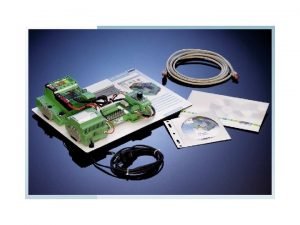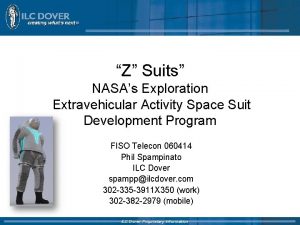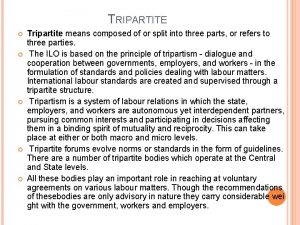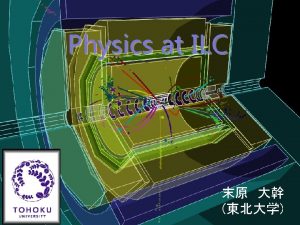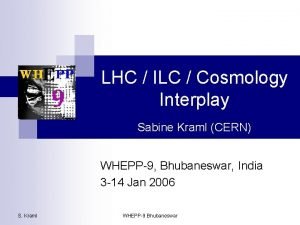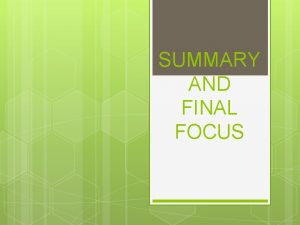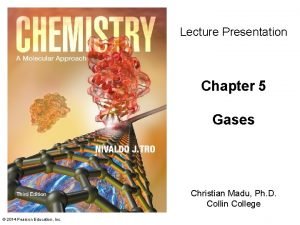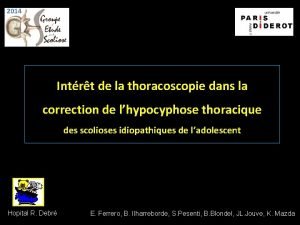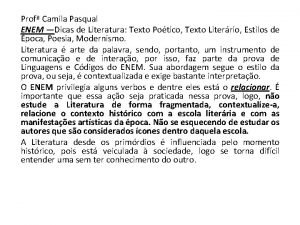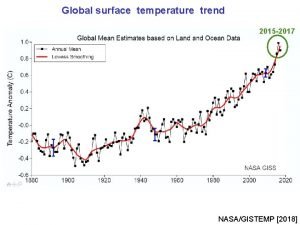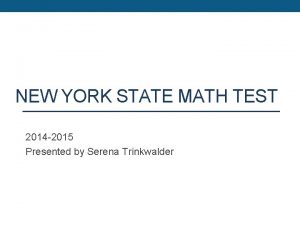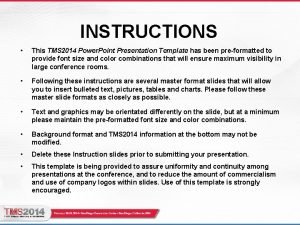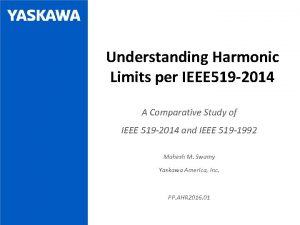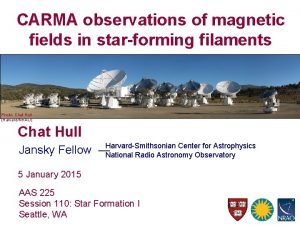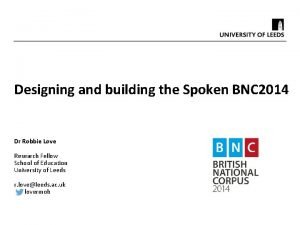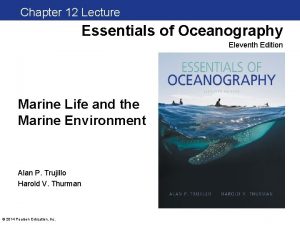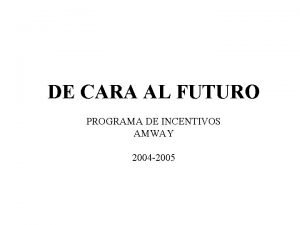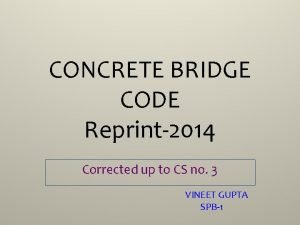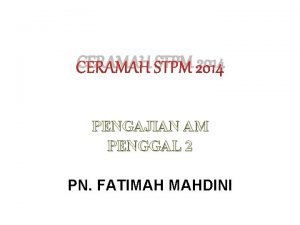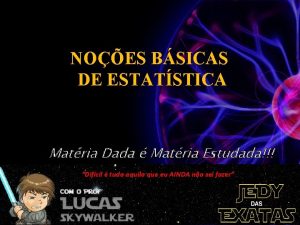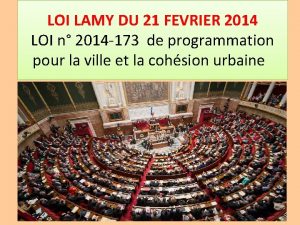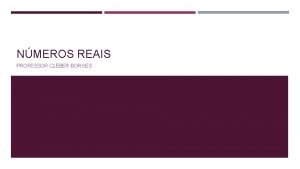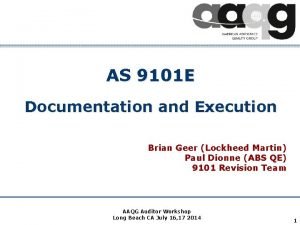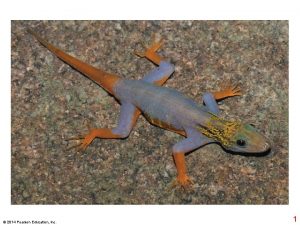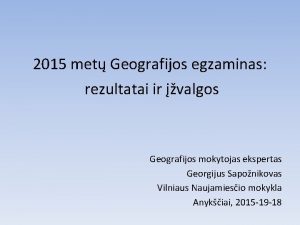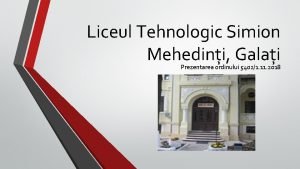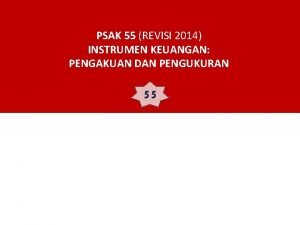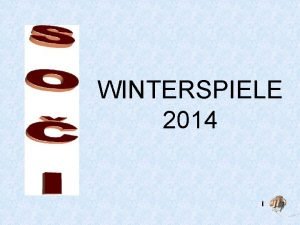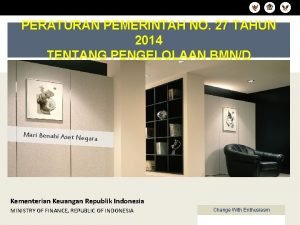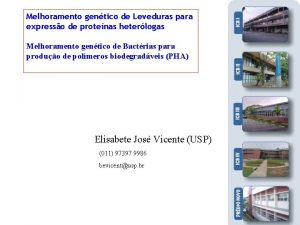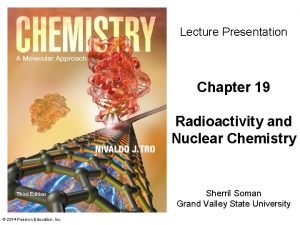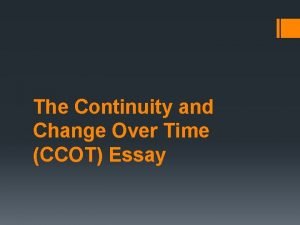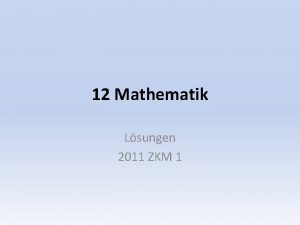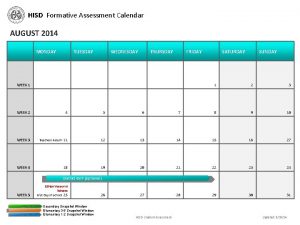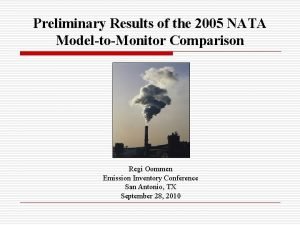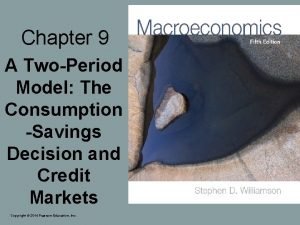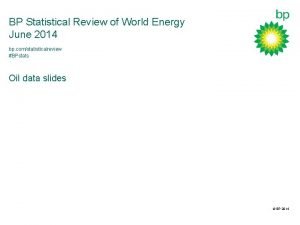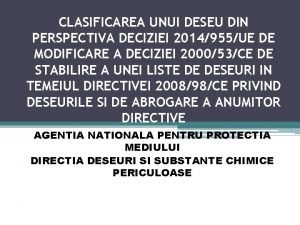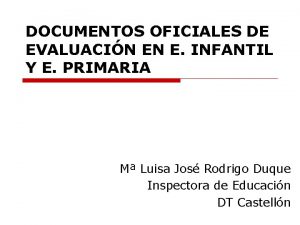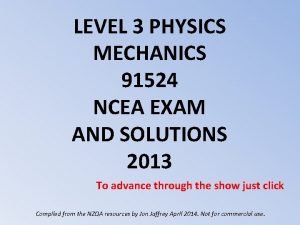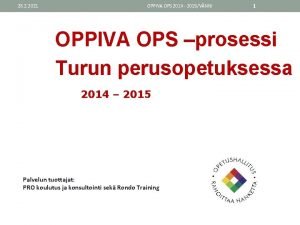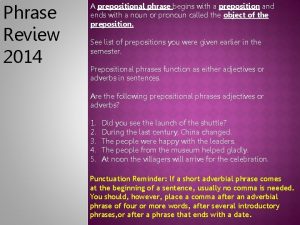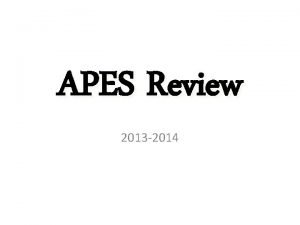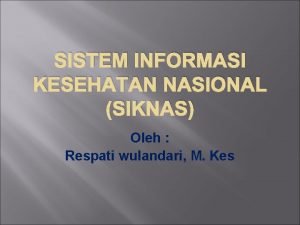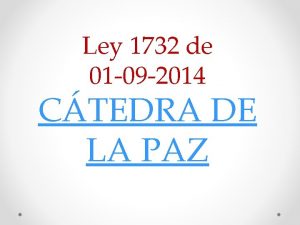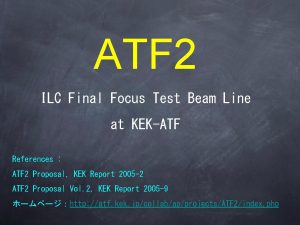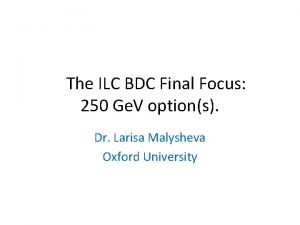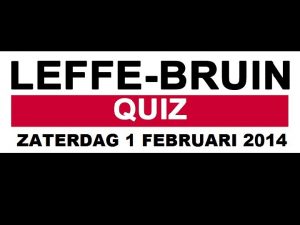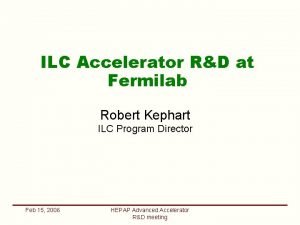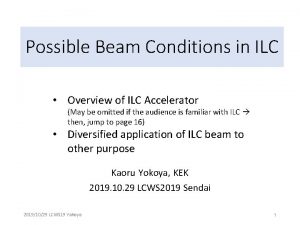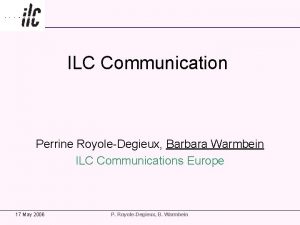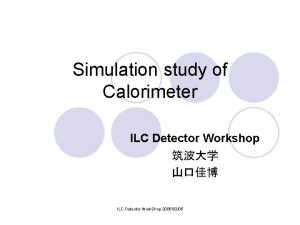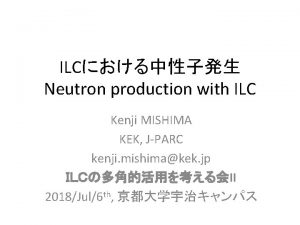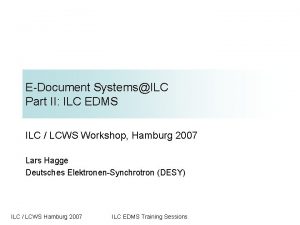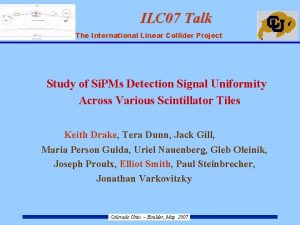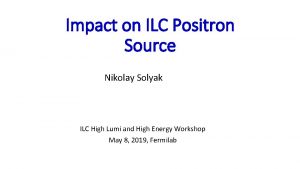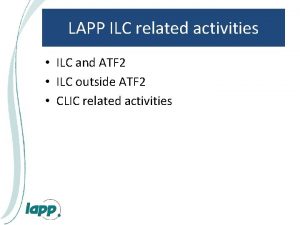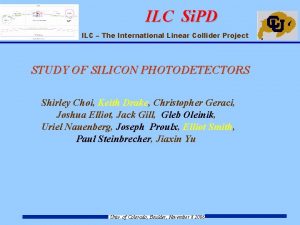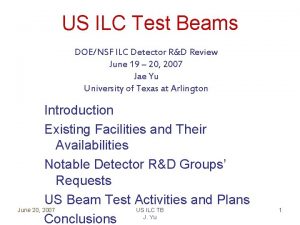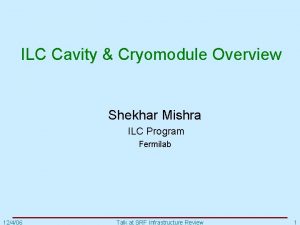ILC Final Focus 2014 02 26 ILC Final











































































































































- Slides: 139

ILC Final Focus を考える 訂正版 2014. 02. 26 久保浄

ILC Final Focus を考える • ILC BDS (Beam Delivery System) の概要 – TDR (Technical Design Report) から +a • • 衝突点でのビーム Final Focus Optics Final Focus のビーム調整 ATF での Final Focus Test

Beam Line Layout of BDS Final Focus


MPS coll: Machine Protection System Collimators Main Linac – BDS で aperture が小さくなる。

Skew correction / emittance diagnostics: 4 skew quadrupole magnets 4 laser wires (4 horizontal + 4 vertical beam size) Laser wire test at ATF extraction line, resolution 1 um

Laser wire monitor tested in ATF extraction beam line L. Nevay, et. al. , IPAC 2011 TUPC 158 Resolution ~ 1 micron or smaller L. Nevay, et. al. , ATF meeting 18 th May 2012 L. Corner, et. al, . ATF 2 project meeting 11 th Jan 2012


Tune-up and Emergency Extraction System Fast kicker: 問題が発生した時、以降のバンチをdumpに蹴り出す。 polarimeter, emittance diagnostics のBPMでenergy, orbit のずれを検出 以降のバンチを蹴りだす (下流に行ってしまうもの 1~2バンチ) バンチ間隔 550 ns Pulse magnet ビームパルス間(200 ms)でon-off Tuneup dump 上流のtuning 時などにもここのdumpにビームを捨てる Full power beam に対応 Beam sweeper

Collimation Betatron collimation 6 - 9 sx 40 - 60 sy half-gap ~1/0. 5 mm Energy collimation half gap 0. 5 - 1 mm hx 150 mm Betatron collimation Energy collimation

Collimation: Spoiler - Absorber Spoiler Absorber: 30 X 0 Spoiler: 0. 5 -1 X 0 ビームのコアが当たっても2 バンチまで耐えられる

Gap adjustable Spoiler TDR Copper ? Beryllium ? Beam Taper for reducing wakefield

Gap adjustable Spoiler B. D. Fell, et. al. , EPAC 08, Genoa, Italy, WEPP 168


Muon suppression A. I. Drozhdin, et. al. , PAC 07, Albuquerque, THPMN 100


Crossing angle and crab crossing angle q (2 mrad in ILC) h. kick Crab crossing kick l. position kick 17

Luminosity vs. Crossing angle without crab (RDR param) ILC RDR parameter, by CAIN

Crab Cavity TDR

Extraction line IP Dump

Final Doublet + Extraction Quadrupole magnets

Final Quadrupole magnet + Sextupole magnet + Extraction Quadrupole magnets QD 0 : コイルを2つに分割 製作精度の向上(ID ~20 mm, Total L~ 3. 5 m) 低エネルギー運転でIPに近い方を強くできる TDR

Final Quadrupole magnet + Sextupole magnet + Extraction Quadrupole magnets TDR



TDR

Beam parameter at IP (Interaction Point)

TDR

TDR

RDR (Reference Design Report)

Beam Parameters at IP for 250 Ge. V Ebeam • Vertical normalized emittance 35 nm (20 nm in DR) • Horizontal normalized emittance 10 um (5. 5 um in DR) • Betay* = 0. 48 mm (bunch length 0. 3 mm) – Hourglass effect, reasonable stability requirement, etc. – Far from Oide limit betay*~ 0. 015 mm • Betax* = 11 mm – Beam-beam • Beamstrahlung energy loss 4. 5% • Disruption parameter (vertical) 25

ILC beam (bunch) at IP Extremely small vertical size (1: 80: 50000) length~300 mm Particles/bunch 2 x 1010 hight~6 nm width~470 nm Beam direction 640 nm in RDR nominal

Hourglass effect - Focal depth of Beam Focusing Focal point Stronger focus smaller size at focal point shallow focal depth 33

Short focal depth Long focal depth Hourglass effect: Maximum luminosity: bunch length ~ focal depth. Need low emittance for high luminosity.

生出リミット Radiation in the focusing magnet Uncertain energy loss uncertain orbit downstream Quad magnet Stronger focus More uncertainty Larger beam size Normalized emittance 35 nm Optimum beta* ~ 0. 015 mm ILC design 0. 48 mm far from Oide-limit


Beam-beam force の影響の例: Beamstrahlung ee+ • beamstrahlung makes energy spread in collisions. Affect quality of experimental data. • beamstrahlung parameter RDR (nominal): 2. 4% TDR: 4. 5 %


Expressions for luminosity hourglass effect beamstrarlung Luminosity can be a function of three parameters: number of colliding particles per time emittance and beamstrahlung energy loss




y offset y angle





















Wakefield による変形 head-head

Wakefield による変形 head-head

Wakefield による変形 head-head

Wakefield による変形 head-head

Wakefield による変形 head-head

Wakefield による変形 head-head

Wakefield による変形 head-head

Wakefield による変形 head-head

Wakefield による変形 head-head












Final Focus Optics

Final doublet vertical horizontal



Final Focus Optics • Chromaticity Correction


Global correction Chromaticity のみを発生させる領域を別に作る 最終収束4極磁石 Chromatic aberration 衝突点 Chromaticity 1 Chromaticity 2 Mainly for x Mainly for y Chromaticity b 1/2 同じ強さの 6極磁場を対称に置くこ とでChromaticity を作り、 Geometrical aberration は消える hx 1 2 6極磁石 垂直、水平方向のchromaticity correction のため、2組必要

FF optics with global chromaticity correction Chromati city 1 Chromati city 2 P. Raimondi and A. Seryi, PRL Vol. 86 3779 (2001)

Local correction Final Q の隣に6極磁石を置き、Chromaticity を補正する。 発生したGeometrical aberration等は上流で補正 6極磁石 Geometric Correction 6極磁石 Chromatic Correction 最終収束4極磁石 Geometric Aberration 発生 Chromatic aberration 発生 衝突点 ~np Chromaticity Cancel Horizontal Dispersion

FF optics with local chromaticity correction (ILC TDR) Chromatic, Geometrical Aberration correction Final Doublet + Chromaticity correction IP

6極磁石中心でのエミッタンス、ディスパージョンの ビームサイズへの寄与 (mm) sqrt(exbx) hxs. E/E electron positron SF 6 755 0 0 SF 5 755 85 46 SD 4 482 54 29 SF 1 718 203 109 SD 0 383 108 58 sqrt(eyby) 30 30 50 30 47

各部のChromaticityへの寄与 Quadrupole magnets Sextupole magnets QD 0 の寄与を SD 0 でほぼ打ち消しているが、 完全に「Local」というわけではない

Local Correction Global Correction の比較 Local Correction の方が Energy Acceptance が大きい。 2001 Report on the Next Linear Collider: A report submitted to Snowmass '01 http: //www-project. slac. stanford. edu/lc/wkshp/snowmass 2001/ Local correction: beam halo が小さい Final Q 入り口での粒子の分布 P. Raimondi and A. Seryi, PRL VOLUME 86, NUMBER 17, p 3779 設計通りにできれば、Local Correction の方が性能が良い。


Final Focus Line で発生するEnergy Spread は Chromaticity Correction が効かない Dispersion を作り始める Bend の中とその下流で発生するenergy 変化 Position = Dispersion x Energy deviation という関係が崩れる Energy change << 1/ Chromaticity of Final Q ~ 1/10000 でなければならない。 Roughly estimated energy spread induced by each effect Space charge 7 E-11 Resistive wall wake 1. 1 E-5 Incoherent SR 1. 5 E-5 Coherent SR < 1. 3. E-6 Crab cavities wake 1 E-6 Cavity BPM wake 1. 4 E-5** copper coated stainless steel beam pipe Weak bending magnets ~ 0. 04 T **ATF 2 cavity BPM design assumed. Can be reduced by careful design.




Y. Nosochkov, et. al. , “ILC EXTRACTION LINE FOR 14 MRAD CROSSING ANGLE” SLAC-PUB-11591 Conclusion: “. . . The tracking simulations showed that the losses of primary electrons and BS photons are acceptable in the considered nominal and high-L options except the 1 Te. V CM high-L option (c 25) which should be excluded from consideration. . ” ~RDR nominal ~TDR



衝突点でのビームサイズ調整 • Beam Based Alignment • ほとんどの磁石は精密な可動台の上に置かれる • Optics 補正、Dispersion 補正 • 上流のビームサイズモニター 初期の調整手順について後述 • BPM • ビームサイズ調整ノブ 垂直ビームサイズ調整ノブ: sextupole magnets (on movers) の位置と強さ Corrected coupling Linear knob (線形オプティク ス調整) Horizontal move of sextupole magnets Vertical move of sextupole magnets yy’ (Focal Position) Ey (Dispersion) x’y Non-linear knob Strength change of sextupole magnets x’yy’ Eyy’





Ground motion model A, B, C, K を使ったシミュレーション例 (TDR PartI p 162) Model C ではルミノシティが10%程度減少する。 ほとんどの影響はBDSで発生する。 TDR Ground motion model A, B, C: International Linear Collider Technical Review Committee, Second Report, SLAC-R-606, 2003.

Luminosity of head bunch is small Orbit feed back recovers luminosity Scan angle etc. searching higher luminosity


Beam Stabilization at ATF-EXT ー Intra-train Fast Feedbackー FONT feedback EXT-FONT by stripline BPM, result 2014/Jan - latency ~133 ns ILC bunch spacing 550 ns (nominal) 550/2 ns (upgrade) Feed backの速さ は問題ない Slide from Terunuma FONT group, slide from Terunuma


QD 0 + SD 0 + QDEX 1 beam “push pull” beam



Luminosity Max. Luminosity Beam position scan Beam size knob change Max. Luminosity Beam size knob

Fast Luminosity monitor The ILC luminosity can be measured with a precision of 10− 3 or better by measuring the Bhabha rate in the polar-angle region from 30– 90 mrad. Two detectors are located just in front of the final doublets. The Lumi. Cal covers the range from 30– 90 mrad and the Beam. Cal covers the range from 5– 30 mrad. At 500 Ge. V centre-of-mass energy, the expected rate in the Lumi. Cal region is 10 Bhabhas per bunch train, which is too low to permit its use as an intra-train diagnostic for tuning and feedback. At smaller polar angles of 5 -30 mrad the rate or energy deposition of beamstrahlung e+e− pairs can be measured and provides a fast luminosity diagnostic. The expected rate in this region is 15 000 pairs (and 50 Te. V energy deposition) per bunch crossing. Furthermore, the spatial distributions of pairs in this region can be used to determine beam-collision parameters such as transverse sizes and bunch lengths.

Si. D forward region (from TDR)

ILD forward region (from TDR)


ATF での Final Focus Test (ATF 2) • Achievement of 37 nm beam size (Goal 1) – Demonstration of a compact final focus system based on local chromaticity correction • Control of beam position (Goal 2) – Demonstration of beam orbit stabilization with nanometer precision at the IP • Establishment of beam jitter controlling techniques at the nano-meter level with an ILC-like beam

Accelerator Test Facility (ATF) at KEK Focal Point Extraction Line IP; ~40 nm beam Final Focus Test Line ATF Damping Ring (140 m) Photo-cathode RF Gun ATF Linac (1. 3 Ge. V)

ILC FF ATF 2 FF


ビーム調整: 垂直ビームサイズ調整ノブ 5 sextupole magnets (on movers) :位置と強さ 4 skew-sextupole corrector magnets:強さ Corrected coupling Linear knob (線形オプティク ス調整) Horizontal move of sextupole magnets Vertical move of sextupole magnets yy’ (Focal Position) Ey (Dispersion) x’y Non-linear knob Strength change of sextupole magnets x’yy’ Strength change of skew sextupole magnets xxy Eyy’ Exy EEy yy’y’

焦点でのビームサイズ測定 Shintake-monitor, (IP-BSM) Interference of two laser beams 電子ビームとの散乱で発生する ガンマ線の量を測定 q Example g 線強度 Fringe scan Fringe phase Scan interference fringe position. Measure modulation.


Status of Goal 1 History of measured beam size Goal Modulation With 30 deg. mode With 2~8 deg. mode Modulation With 174 deg. mode No significant improvement in the period from autumn 2013 to Jan. 2014, which was mostly for IPBPM commissioning.

December 2012: first observation of fringe with 174 deg mode (<70 nm) 2013 winter - spring: Establish tuning procedure, better result (60 -65 nm) (Only with low bunch intensity) Results of 10 consecutive measurements after tuning 2012 Dec. 2013 March 2012/12/21 These histograms do not consider systematic error of the beam size monitor.

Intensity Dependence example Different in different weeks. (? ) Fitted lines: Cannot be explained by intrabeam scattering in DR, etc. .



• Control of beam position (Goal 2) – Demonstration of beam orbit stabilization with nanometer precision at the IP • Establishment of beam jitter controlling techniques at the nano-meter level with an ILC-like beam

Beam Stabilization at ATF-EXT ー Intra-train Fast Feedbackー FONT feedback EXT-FONT by stripline BPM, result 2014/Jan IP-FONT - latency ~133 ns by IP Cavity BPM expected (from results in EXT) FB OFF: jitter 14. 7 nm FB ON: jitter 2. 6 nm ? Slide from Terunuma FONT group, slide from Terunuma

IP nm beam position stabilize system IP-FONT – Monitor: Cavity BPM(designed resolution 2 nm) – Stlipline BPMs (resolution 0. 4 um) were used for the beam test in EXT Slide from Terunuma 137


 Prolepsis
Prolepsis Porter's generic strategies
Porter's generic strategies Cost leadership and differentiation
Cost leadership and differentiation Actor focus vs object focus
Actor focus vs object focus Phoenix contact ilc 150 eth
Phoenix contact ilc 150 eth David,i
David,i Ilc dover space suit
Ilc dover space suit Zora rutar ilc
Zora rutar ilc Ilc and slc
Ilc and slc Boom chicka boom
Boom chicka boom Ilc 2013
Ilc 2013 Spectrum ilc 1002
Spectrum ilc 1002 Final focus template
Final focus template 2014 cengage learning accounting answers
2014 cengage learning accounting answers Cappellq
Cappellq Gred spm 2014
Gred spm 2014 2014 pearson education inc
2014 pearson education inc Comment feature in word
Comment feature in word 2014 pearson education inc
2014 pearson education inc 2014 brain wrinkles
2014 brain wrinkles 1477 de 2014
1477 de 2014 Hypocyphose
Hypocyphose Poema narrativo
Poema narrativo Ipcc, 2014
Ipcc, 2014 State test 2014
State test 2014 Jessica hall miss senorita 2014
Jessica hall miss senorita 2014 Agosto 2014
Agosto 2014 Tms 2014
Tms 2014 Acuerdo 0373 de 2014
Acuerdo 0373 de 2014 2014 pearson education inc
2014 pearson education inc Health systems building blocks
Health systems building blocks Uu no 38 tahun 2014 tentang keperawatan
Uu no 38 tahun 2014 tentang keperawatan Leader 2014-20
Leader 2014-20 Ieee 519 1992
Ieee 519 1992 Salient features of rte act 2009
Salient features of rte act 2009 Avstånd till plankorsning
Avstånd till plankorsning Chen 2014
Chen 2014 Spoken bnc 2014
Spoken bnc 2014 Protoctista
Protoctista 2014 pearson education inc
2014 pearson education inc Poat 2014-2020
Poat 2014-2020 Incentivos amway 9
Incentivos amway 9 Concrete bridge code
Concrete bridge code Care act 2014
Care act 2014 Flacs exam 2020
Flacs exam 2020 Carta pai bandingan stpm
Carta pai bandingan stpm Upe 2014 numa competição esportiva cinco atletas
Upe 2014 numa competição esportiva cinco atletas Beftn vs npsb
Beftn vs npsb Loi lamy
Loi lamy Spite movie
Spite movie Implementasi uu no 33 tahun 2014 dilaksanakan pada
Implementasi uu no 33 tahun 2014 dilaksanakan pada Adc gartner magic quadrant 2018
Adc gartner magic quadrant 2018 Fuvest 2014 o numero real x que satisfaz
Fuvest 2014 o numero real x que satisfaz 30 januari 2014
30 januari 2014 Iso 14785:2014
Iso 14785:2014 Enade 2014
Enade 2014 Cpea results 2014 grenada
Cpea results 2014 grenada Lublin et al 2014
Lublin et al 2014 Summer camp 2014
Summer camp 2014 Vldb 2014
Vldb 2014 2014 special olympics
2014 special olympics Gnu dirty pillow 2014
Gnu dirty pillow 2014 Mars 2014
Mars 2014 Conae 2014
Conae 2014 Change data capture sql server 2005
Change data capture sql server 2005 Brian geer
Brian geer 2014 pearson education inc
2014 pearson education inc Erin kathryn 2014
Erin kathryn 2014 Srnt 2014
Srnt 2014 Www.teachitscience.co.uk 2018 answers
Www.teachitscience.co.uk 2018 answers Sus 2014
Sus 2014 Www cxc org results 2014
Www cxc org results 2014 2015 geografijos egzamino atsakymai
2015 geografijos egzamino atsakymai Omen 4435 din 2014
Omen 4435 din 2014 Implementasi permendikbud 63 tahun 2014
Implementasi permendikbud 63 tahun 2014 Psak 55 revisi 2014
Psak 55 revisi 2014 2014 pearson education inc
2014 pearson education inc Ww1 to great depression cloze notes
Ww1 to great depression cloze notes Stadt der winterspiele 2014
Stadt der winterspiele 2014 Lefoulon ortodoncia
Lefoulon ortodoncia Ue 548/2014
Ue 548/2014 Siklus pengelolaan aset pada pp 27 tahun 2017
Siklus pengelolaan aset pada pp 27 tahun 2017 Common assessment framework 2021
Common assessment framework 2021 Biorremediação
Biorremediação 2014 pearson education inc
2014 pearson education inc Erasmus 2014 2020
Erasmus 2014 2020 Em 385 1 1 2014
Em 385 1 1 2014 Impaact 2014
Impaact 2014 Pne lei 13005 de 2014
Pne lei 13005 de 2014 Apic cleaning validation guidelines 2014
Apic cleaning validation guidelines 2014 Kerpel 2014
Kerpel 2014 Microsoft word 2014
Microsoft word 2014 Jessica hall libros
Jessica hall libros Sfc 2014 portal
Sfc 2014 portal Ccot essay
Ccot essay Orden 62/2014
Orden 62/2014 Sfc 2014-2020
Sfc 2014-2020 Zentrale aufnahmeprüfung 2011 lösungen
Zentrale aufnahmeprüfung 2011 lösungen Hisd spring break 2014
Hisd spring break 2014 Naked
Naked Taxonweb aanslagjaar 2014
Taxonweb aanslagjaar 2014 Shadow payroll spain
Shadow payroll spain 2014 pearson education inc
2014 pearson education inc 2014 pearson education inc
2014 pearson education inc Bp statistical review of world energy 2014
Bp statistical review of world energy 2014 2014 pearson education inc
2014 pearson education inc Bpi challenge 2014
Bpi challenge 2014 Jessica hall (miss señorita) 2014
Jessica hall (miss señorita) 2014 2014 pearson education inc
2014 pearson education inc Decizia 2014/955/ue
Decizia 2014/955/ue National core curriculum for basic education
National core curriculum for basic education Orden 89/2014
Orden 89/2014 Tablets for schools to avoid computer addiction
Tablets for schools to avoid computer addiction Microsoft word 2014
Microsoft word 2014 2014 pearson education inc
2014 pearson education inc Lublin
Lublin 91524
91524 Eura 2014
Eura 2014 Enade 2014
Enade 2014 5 a day language review week 11
5 a day language review week 11 Ops 2014
Ops 2014 Hyra mjukglassmaskin malmö
Hyra mjukglassmaskin malmö Teacher twins
Teacher twins Is in 2014 a prepositional phrase
Is in 2014 a prepositional phrase Principles of social services and wellbeing act
Principles of social services and wellbeing act Amway ppt presentation 2014
Amway ppt presentation 2014 Enem 2009 gerente boa tarde
Enem 2009 gerente boa tarde Sfmis 2014
Sfmis 2014 2014 cengage learning
2014 cengage learning Sample variance symbol
Sample variance symbol Pne 2014-2024
Pne 2014-2024 Teacher twins@2014
Teacher twins@2014 Kos bersalin warga asing di hospital kerajaan 2020
Kos bersalin warga asing di hospital kerajaan 2020 Aca 2014 code of ethics
Aca 2014 code of ethics Forests reach their greatest ecological complexity when
Forests reach their greatest ecological complexity when 2014 world cup attendance
2014 world cup attendance Komponen dalam siknas
Komponen dalam siknas 2014 pearson education inc
2014 pearson education inc 2014 pearson education inc
2014 pearson education inc Ley 1732
Ley 1732




